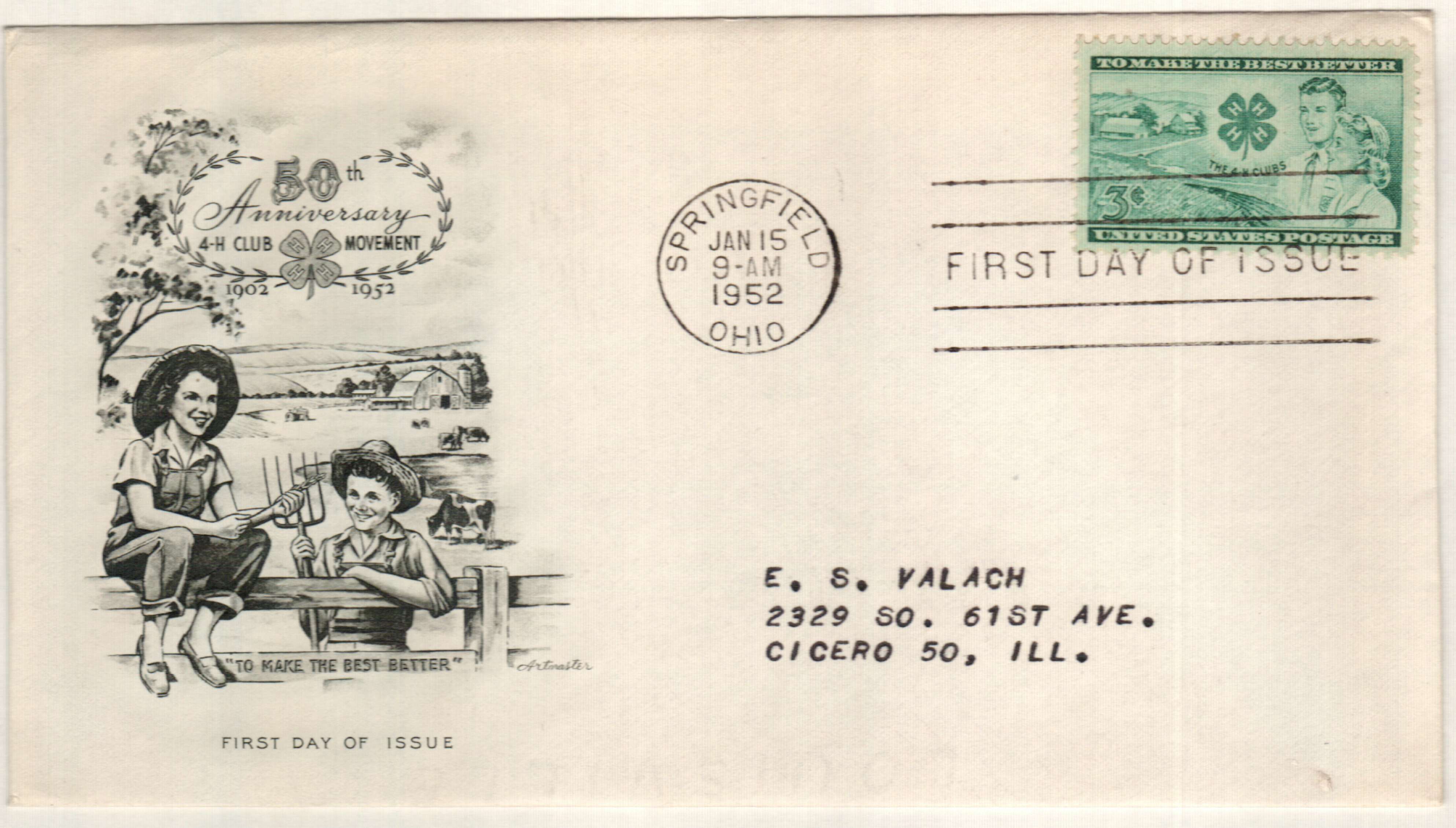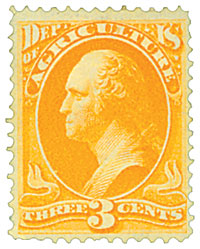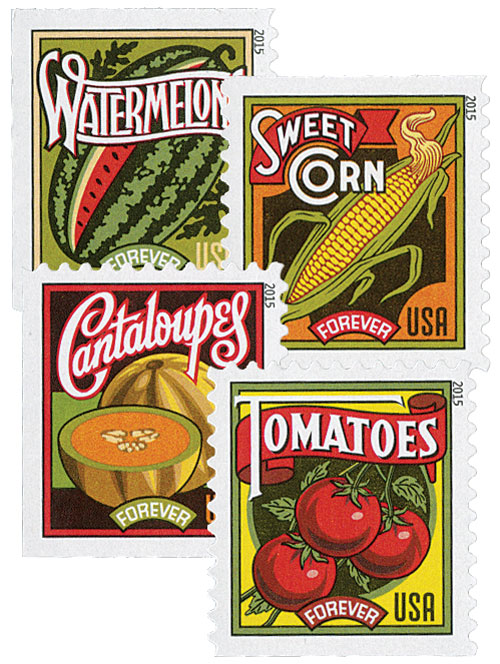
# O3 - 1873 3c Yellow, Department of Agriculture, Washington, Hard Paper
1873 3¢ Washington
Official Stamp – Agriculture
Founding Of The 4-H Club
In the late 1800s, it wasn’t uncommon for individuals and groups to create clubs for children to help them appreciate farming and nature. While it’s unclear who was the first to create such a group, 4-H Club recognizes A.B. Graham as one of the early founders.

On January 15, 1902, A.B. Graham, superintendent of schools in Clark County, Ohio, created the Tomato Club or the Corn Growing Club. Graham’s club held regular meetings and had a planned program designed to teach youths through hands-on practical experience. The club’s members worked on projects dealing with vegetables, flowers, and soil testing. The Ohio State University Agricultural Experiment Station furnished the club with varieties of corn for the youths to grow.

Also important to the 4-H movement was Jessie Field Shambaugh. As a teacher in Page County, Iowa, Shambaugh created agricultural clubs and competitions to increase student interest in farming. By 1906, Shambaugh was superintendent of the 130 schools in Page County. She and her teachers formed the “Page County Progressives” and soon all Page County Schools had Boys Corn Clubs and Girls Home Clubs.

In 1908, the National Educational Bulletin declared Page County schools “The Best Rural Schools in America.” Superintendents quickly flocked to the area to learn more about this new approach. By 1910, similar programs were sprouting up across the country. Shambaugh’s work, along with similar work throughout the US, turned into the 4-H Club of America by 1914. The 4-H Club movement was sponsored by the US Department of Agriculture, to teach rural youngsters modern farming methods. Shambaugh also designed the clover emblem that symbolizes the organization to this day. The four H’s stand for head, heart, hands, and health.

The nation’s first state 4-H camp was created in 1921 at Jackson’s Mill, West Virginia. This area had already become a popular picnic spot for local residents. The camp was placed under the care of the West Virginia University Extension Service. Jackson’s Mill was an early industrial center in West Virginia and the boyhood home of Confederate General Thomas J. “Stonewall” Jackson.
Today, 4-H is the largest informal educational program for young people in the US, with 6.5 million members between the ages 5 and 21. The organization’s slogan is “Learn by Doing,” and its members acquire skills through working on various projects and activities. The mission of 4-H is to engage “youth to reach their fullest potential while advancing the field of youth development.”
1873 3¢ Washington
Official Stamp – Agriculture
Founding Of The 4-H Club
In the late 1800s, it wasn’t uncommon for individuals and groups to create clubs for children to help them appreciate farming and nature. While it’s unclear who was the first to create such a group, 4-H Club recognizes A.B. Graham as one of the early founders.

On January 15, 1902, A.B. Graham, superintendent of schools in Clark County, Ohio, created the Tomato Club or the Corn Growing Club. Graham’s club held regular meetings and had a planned program designed to teach youths through hands-on practical experience. The club’s members worked on projects dealing with vegetables, flowers, and soil testing. The Ohio State University Agricultural Experiment Station furnished the club with varieties of corn for the youths to grow.

Also important to the 4-H movement was Jessie Field Shambaugh. As a teacher in Page County, Iowa, Shambaugh created agricultural clubs and competitions to increase student interest in farming. By 1906, Shambaugh was superintendent of the 130 schools in Page County. She and her teachers formed the “Page County Progressives” and soon all Page County Schools had Boys Corn Clubs and Girls Home Clubs.

In 1908, the National Educational Bulletin declared Page County schools “The Best Rural Schools in America.” Superintendents quickly flocked to the area to learn more about this new approach. By 1910, similar programs were sprouting up across the country. Shambaugh’s work, along with similar work throughout the US, turned into the 4-H Club of America by 1914. The 4-H Club movement was sponsored by the US Department of Agriculture, to teach rural youngsters modern farming methods. Shambaugh also designed the clover emblem that symbolizes the organization to this day. The four H’s stand for head, heart, hands, and health.

The nation’s first state 4-H camp was created in 1921 at Jackson’s Mill, West Virginia. This area had already become a popular picnic spot for local residents. The camp was placed under the care of the West Virginia University Extension Service. Jackson’s Mill was an early industrial center in West Virginia and the boyhood home of Confederate General Thomas J. “Stonewall” Jackson.
Today, 4-H is the largest informal educational program for young people in the US, with 6.5 million members between the ages 5 and 21. The organization’s slogan is “Learn by Doing,” and its members acquire skills through working on various projects and activities. The mission of 4-H is to engage “youth to reach their fullest potential while advancing the field of youth development.”















